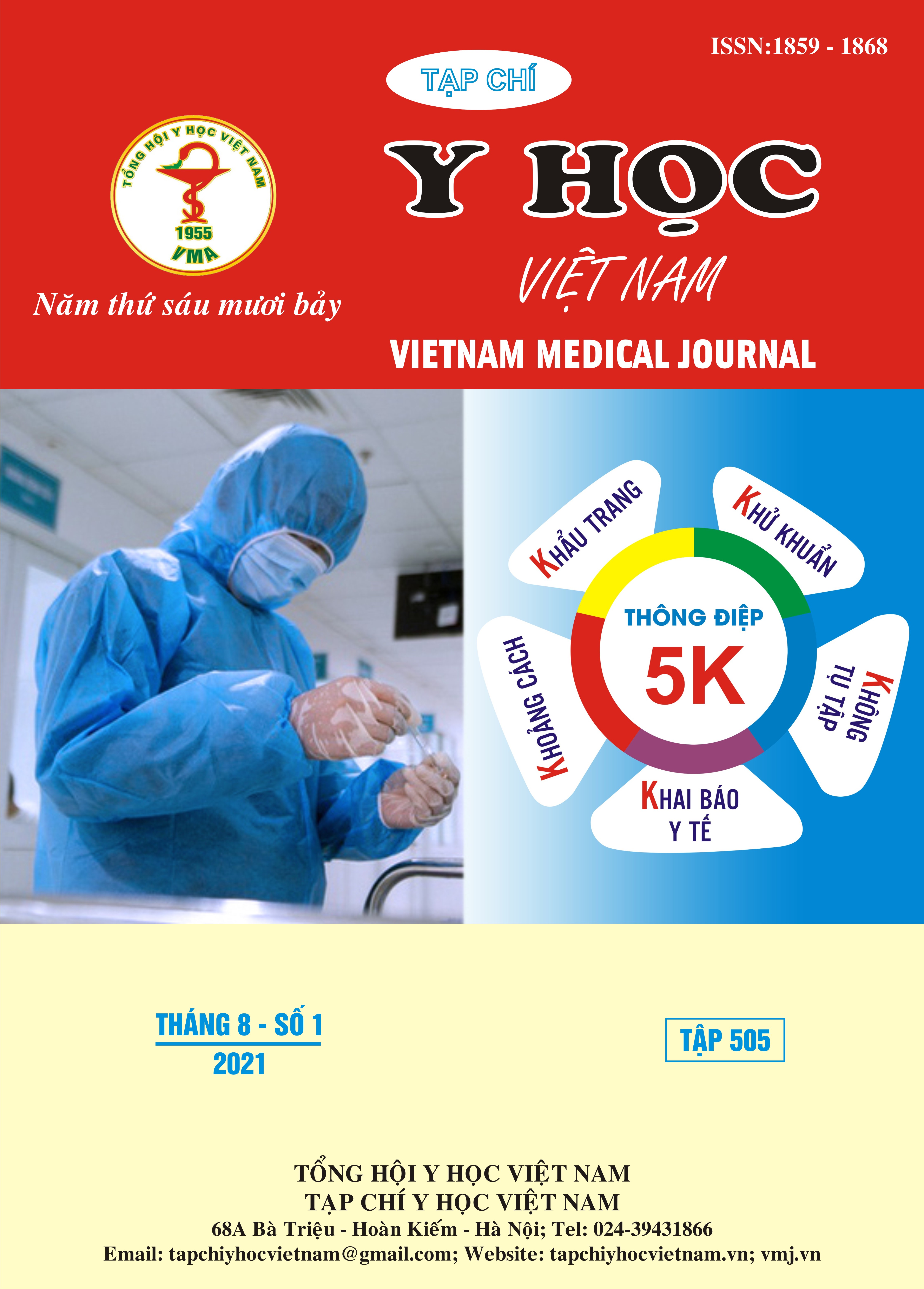REPLANTATION FOR FINGER AMPUTATION WITH MICROSURGICAL TECHNIQUE
Main Article Content
Abstract
Objectives: To study the clinical characteristics of finger amputation and to evaluate the outcome of microsurgical finger replantation. Material and method: The study was carried out at Hue Central Hospital (from 4/2019 to 6/2020) on 14 patients with 32 fingers who were surgically reattached by microsurgery. A prospective descriptive study with follow-up on the characteristics of finger amputation and the functional and aesthetic characteristics of the fingers after surgery. Results: 14 patients with 32 severed fingers were replanted with microsurgical technique, including 13 male and 1 female; age from 20 to 60 years old; There are many different causes, of which the majority is saw cutting with 50%. Finger 2 accounts for the most proportion with 9 fingers out of 32 being severed. Most of the lesions are in zone V with 15 cases. There are 3/32 fingers with venous congestion, 3 cases of necrosis. The length of surgery depends on the case, ranging from 2 to 9 hours and the average is 4.9 ±2.2 hours. After 1 month and 3 months follow-up,there were no cases of paresthesia, pain or numbness in the fingertips. All patients began to have superficial sensations (pain and rudimentary palpation). 20/29 fingers replanted with microsurgery had relatively good function, the range of motion was close to normal compared to the opposite hand.Nail deformity and pulp atrophy occur but are not significant. Almost all patients expressed aesthetic satisfaction with the appearance finger after reattachment. Conclusion: Finger-joint surgery is becoming a key option in finger fracture and the designation is further expanded due to the understanding of microsurgical surgery and the rapid development of microscopic lenses. New-generation surgery and of microsurgery and micro-surgical instruments. Microsurgery finger replantation surgery is becoming the key option for finger severing and this indication is further expanded by proficiency in microsurgery skills and growth beyond level of new generation microscopic.
Article Details
Keywords
Hand, microsurgery reconstruction, finger replantation, finger amputation
References
2. Yoshimura, .M, (2003), “Indications andLimits of Digital Replantation”. Journal of the Japan Medical Association; 46(10): 460-467.
3. Weiland . A .J, Villarreal-Rios .A, Kleinert .H .E, Kutz J, et all, (1977), “Replantation of digits and hands: analysis of surgical techniques and functional results in 71 patients with 86 replantations”. J Hand Surg Am; 2(1):1‐12.
4. Molski .M, (2007), “Replantation of fingers and hands after avulsion and crush injuries”. J Plast Reconstr Aesthet Surg;60(7):748‐754.
5. Hattori .Y, Doi .K, Ikeda .K, et all, (2003), “Significance of venous anastomosis in fingertip replantation”. Plast Reconstr Surg;111(3):1151‐1158.
6. Motamedolshariati .M.S, Rezaei .E, Dahmardehei . M, (2015), “Finger Replantation: A Review of Replantation of Four Fingers in Three Patients”. Zahedan J Res Med Sci; 17(1): 47-50.
7. An‑shi .H, Subhash .R, Jia‑xiang .G et al, (2016), “Fingertip replantation (zone I) without venous anastomosis: clinicalexperience and outcome analysis”. SpringerPlus; 5:1835.


